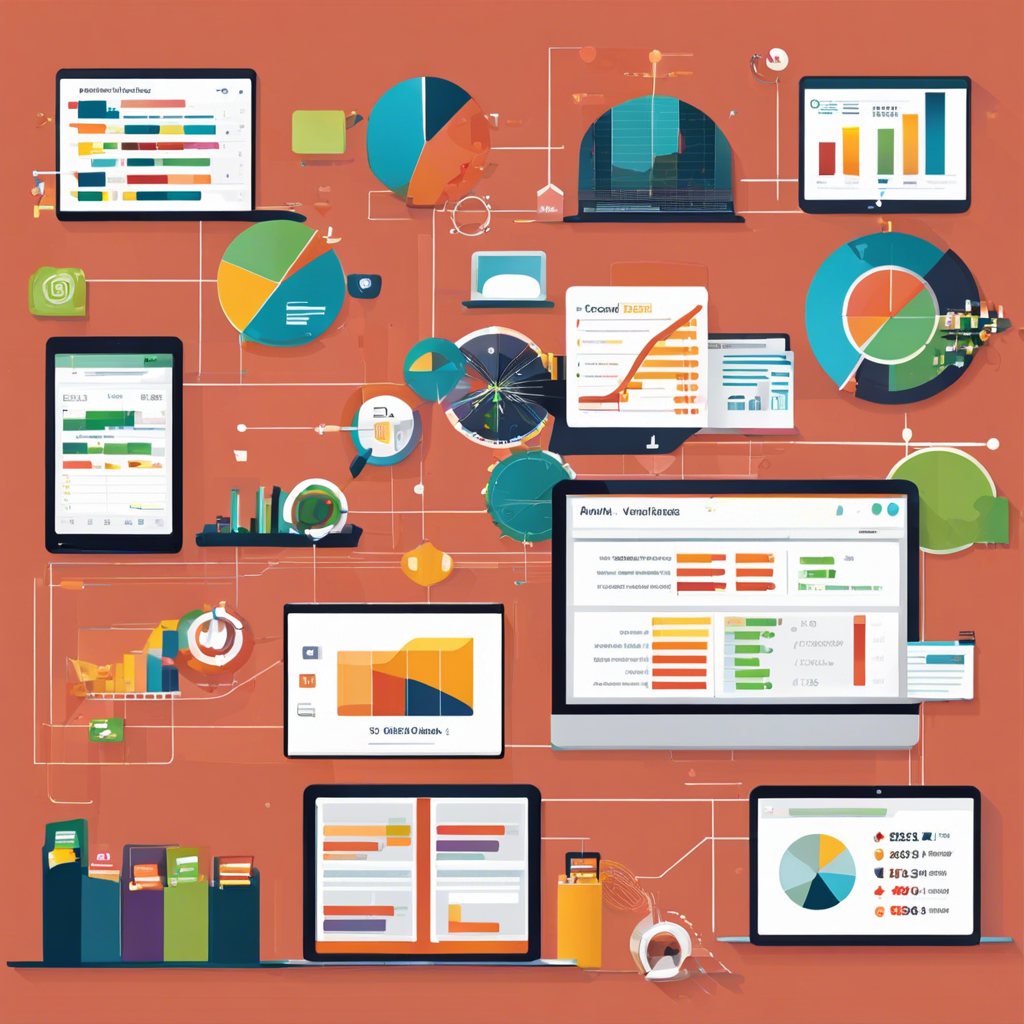Explore how businesses leverage customer data for targeted marketing, improving campaign effectiveness and customer engagement through data-driven insights.
In today’s competitive business landscape, understanding your customers is crucial for success. With the vast amount of data available, businesses can gain a competitive edge by analyzing customer behavior and preferences to create targeted marketing strategies. This article delves into the process of collecting and interpreting customer data, and how this information can be utilized to develop effective marketing campaigns that drive engagement and sales.
The power of customer data lies in its ability to provide valuable insights into the needs, preferences, and behaviors of your target audience. By gathering and analyzing this information, businesses can make informed decisions about their marketing efforts, ensuring that their strategies are aligned with their customers’ expectations.
Collecting Customer Data
There are various methods for
capturing customer data
, ranging from traditional surveys and feedback forms to digital tracking technologies. Here’s an overview of some common approaches:
Online Forms and Surveys
Online forms and surveys are a direct way to collect information from customers. These can be integrated into websites, apps, or sent via email campaigns. Customers voluntarily provide their details by filling out these forms, sharing their preferences, demographics, and opinions.
For example, a survey asking about clothing preferences can help a fashion retailer understand its target audience’s style choices. This data can then be used to tailor marketing campaigns to promote relevant products.
Website and App Analytics
Digital analytics tools like Google Analytics provide valuable insights into customer behavior on websites and apps. These tools track user interactions, including page views, clicks, and conversions. By analyzing these metrics, businesses can understand customer journeys, popular content, and areas for improvement.
For instance, an e-commerce store might identify high-traffic product pages with low conversion rates. This could indicate a need for better product descriptions or customer reviews to enhance the user experience and encourage purchases.
Social Media Insights
Social media platforms offer valuable data about customers and their interactions with brands. Through social media analytics, businesses can track engagement metrics, such as likes, shares, and comments, as well as monitor brand mentions and customer sentiment.
By understanding what content resonates with their audience, companies can create more engaging posts and targeted ads. For instance, a social media campaign promoting a new product line might use customer data to identify the most popular features and tailor the campaign accordingly.
Analyzing Customer Data
Collecting data is just the beginning. The real value lies in organizing and interpreting the information to uncover meaningful patterns and trends. Here’s how businesses can make the most of their customer data:
Segmentation and Profiling
Segmentation involves dividing customers into groups based on shared characteristics, such as demographics, behavior, or preferences. By creating customer profiles, businesses can identify distinct segments and tailor their marketing efforts accordingly.
For example, a travel agency might segment customers based on their preferred destinations and travel styles (adventure, luxury, family). Each segment can then receive personalized marketing messages and offers.
Predictive Analytics
Predictive analytics uses historical data and statistical techniques to forecast future customer behavior. By identifying patterns in past purchases or interactions, businesses can anticipate customer needs and preferences, and proactively deliver relevant marketing messages.
For instance, an online retailer might predict a customer’s likelihood of purchasing a specific product based on their browsing history and past purchases. This enables the retailer to send targeted promotions or recommendations to increase sales.
Data Visualization and Reporting
Data visualization tools help businesses present customer data in a clear and concise manner. Visual representations, such as charts and graphs, make it easier to identify trends and communicate insights to stakeholders.
Regular reporting allows businesses to track key performance indicators (KPIs) related to customer engagement and marketing effectiveness. By monitoring these KPIs, companies can make data-driven decisions and adjust their strategies accordingly.
Related Topics:
- Explore how Target Corporation is leveraging data-driven experiences to enhance their retail experience.
- Discover the benefits of data analytics in marketing campaigns and its impact on business success.
- Learn about the importance of customer segmentation and how it can lead to better business decisions.
FAQs
What are the benefits of analyzing customer data for targeted marketing?
Analyzing customer data allows businesses to create personalized experiences, increase customer satisfaction, and improve marketing ROI. By understanding customer preferences, companies can deliver tailored content and offers, leading to higher engagement and conversion rates.
How can small businesses access and analyze customer data effectively?
Small businesses can leverage affordable data analytics tools and platforms. Many cloud-based solutions offer user-friendly interfaces and pre-built templates for data collection, segmentation, and visualization. By utilizing these tools, small businesses can gain valuable insights without a large investment.
Are there any legal considerations when collecting and using customer data?
Yes, businesses must ensure they comply with relevant data protection regulations, such as the GDPR and CCPA. This includes obtaining customer consent, securely storing data, and allowing customers to access and control their personal information. Ethical considerations are also crucial, such as being transparent about data usage and respecting customer privacy.
Conclusion
Customer data is a powerful resource for businesses aiming to create targeted and effective marketing campaigns. By collecting and analyzing information about their customers, companies can develop a deeper understanding of their target audience. This enables them to deliver personalized experiences, increase engagement, and ultimately drive sales. With the right data-driven strategies, businesses can stay ahead of the competition and build long-lasting customer relationships.
